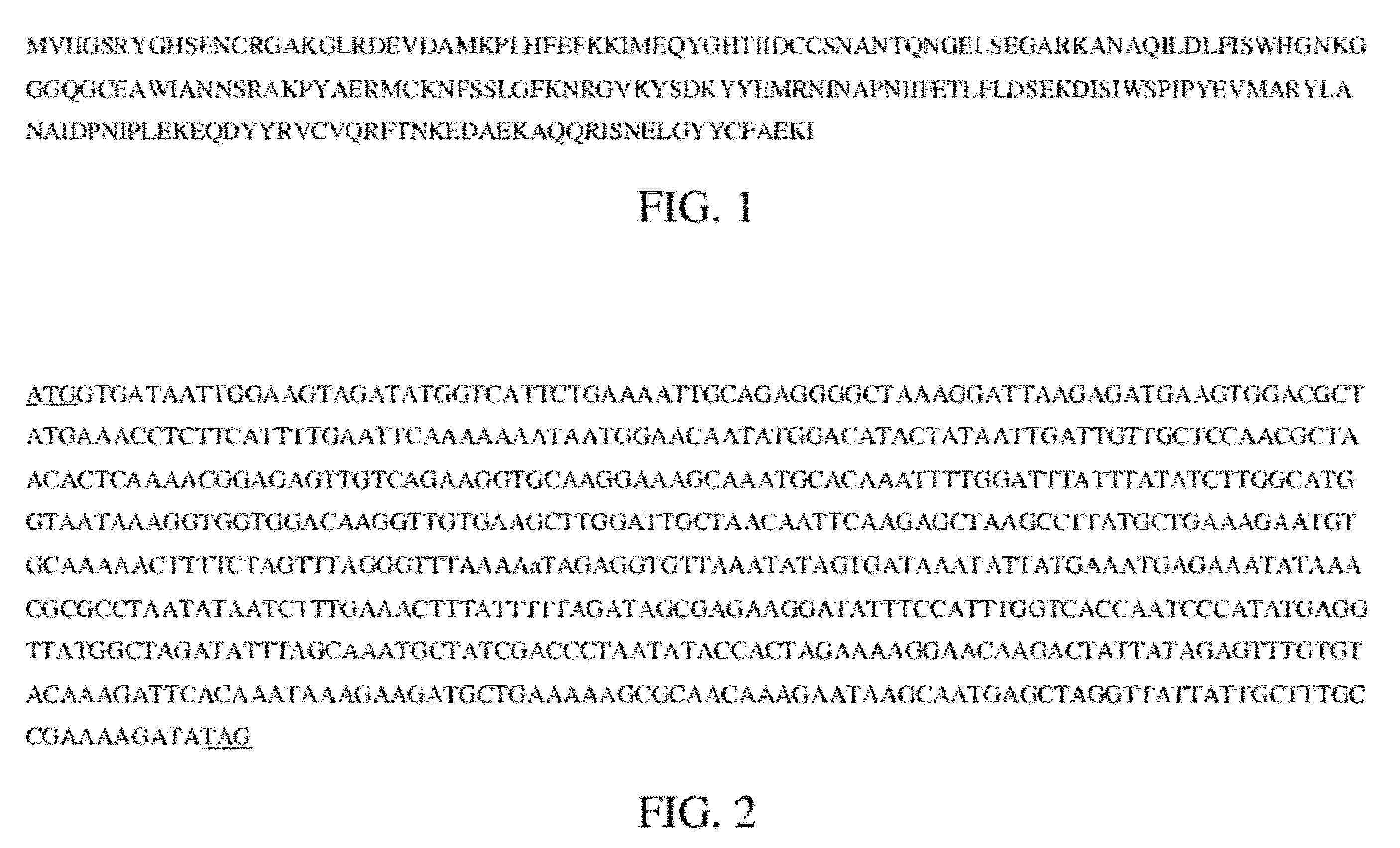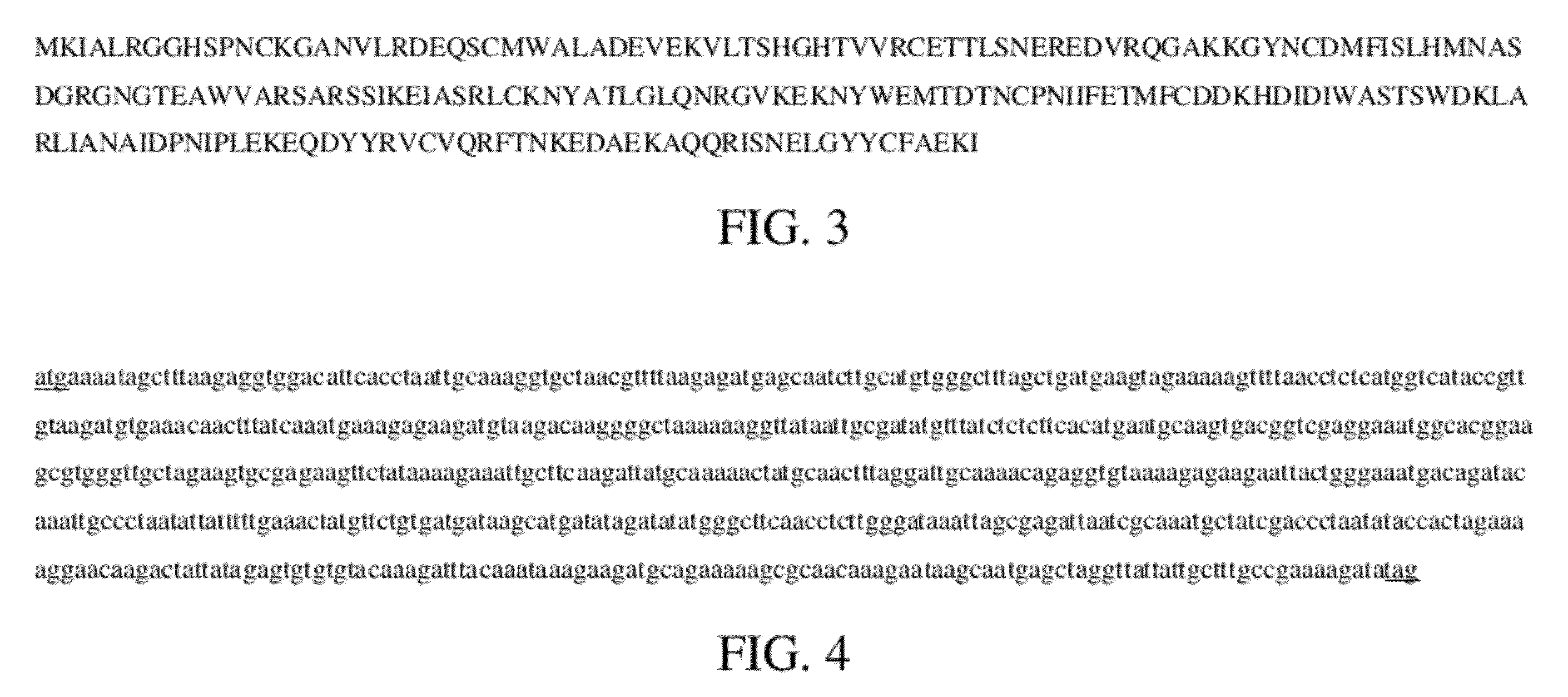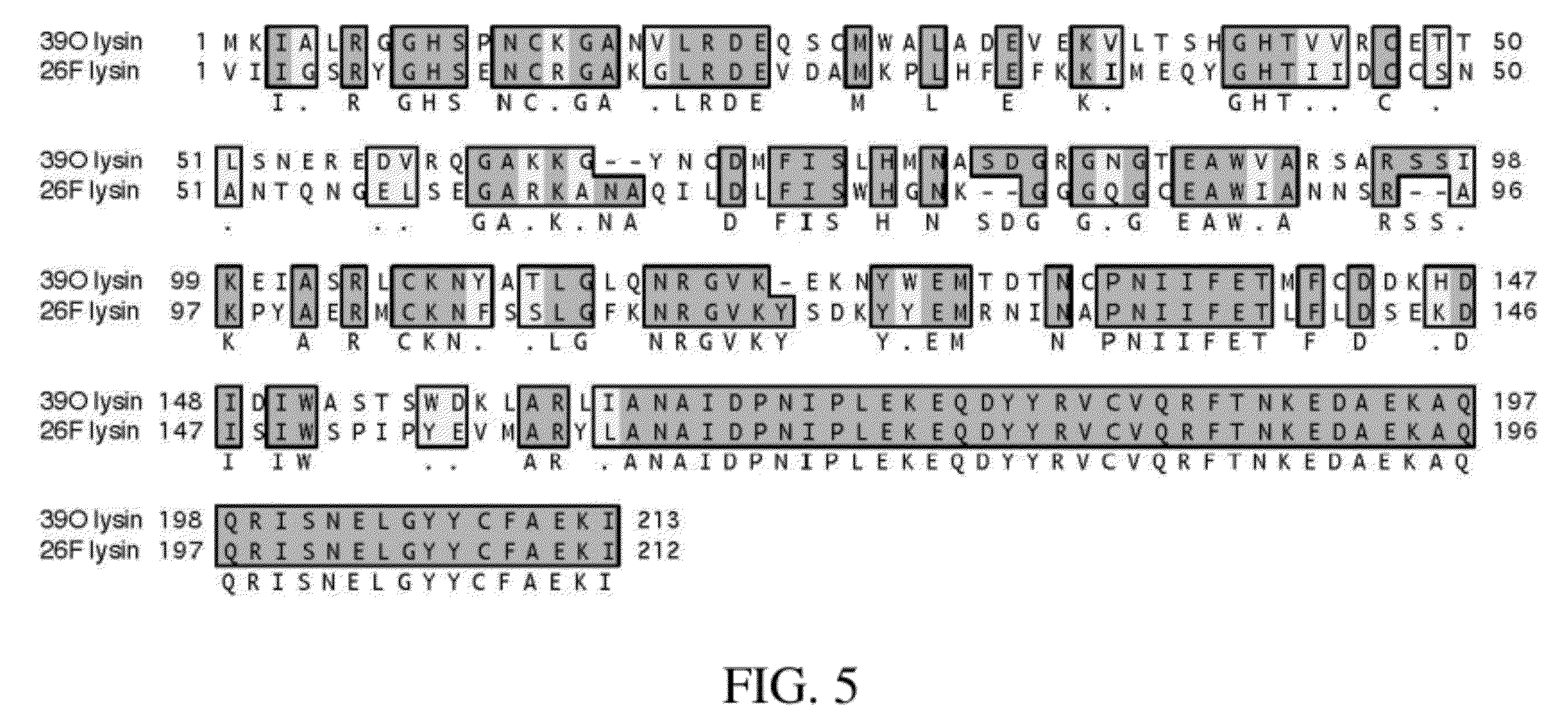Bacteriophage lytic enzymes as alternative antimicrobials
a technology of lytic enzymes and bacteria, which is applied in the field of bacteriaophage lytic enzymes, can solve the problems of many severe infections of animals and humans, most devastating losses, and the death of an unprotected poultry flock
- Summary
- Abstract
- Description
- Claims
- Application Information
AI Technical Summary
Benefits of technology
Problems solved by technology
Method used
Image
Examples
example 1
[0142]The following example illustrates the isolation of bacteriophages lytic for Clostridium perfringens.
[0143]Bacterial Hosts, Bacteriophage Isolation and Propagation
[0144]C. perfringens isolates 39 and 26 were utilized as hosts for propagation of bacteriophage obtained from 0.45 μm filtered offal wash (O) or chicken feces (F) at a local Athens, Ga. chicken processing facility. The host strains were characterized by standard methods and by 16S sequence analysis (Collins et al., 1994; Wise and Siragusa, 2005). Initial screening for bacteriophages lytic for C. perfringens was performed on filtered samples obtained from poultry (intestinal material), soil, sewage and poultry processing drainage water. Bacterial viruses capable of lysing strains of C. perfringens were identified by spot-testing and titration of strains susceptible to the isolated phages. The C. perfringens-specific bacteriophages CP39O and CP26F were propagated by standard procedures (Ackermann and Nguyen, 1983) usin...
example 2
[0146]The following example illustrates the molecular cloning, sequencing, annotation of genomic DNA and phylogenetic analyses.
[0147]Following purification of bacteriophage genomic DNA, the nucleic acid was subjected to spectrophotometer readings at 260 / 280 nm and restriction enzyme digestion followed by agarose gel electrophoresis to assess purity (Sambrook et al., supra). Full-length genome sequencing of the bacteriophage genomes was completed by MWG Biotech, Inc High Point, N.C. USA. Briefly, phage genomic DNA was sheared using a nebulizer, blunt-end repaired and dephosphorylated (Sambrook et al., 1989). DNA fragments of desired size (1 to 4 kb) were blunt-end ligated into pSmart (Lucigen™) for propagation in E. coli following transformation. Clones were sequenced such that approximately 14-fold redundancy was obtained for the genome that included primer-walking to fill gaps (Fouts et al., 2006). Molecular cloning was also completed using the restriction enzymes HindIII, EcoRI, E...
example 3
[0149]The following example illustrates viron purification, two dimensional electrophoresis and proteomic analysis of isolated CP39O (PTA-11081) and CP26F (PTA-11080) bacteriophages.
[0150]Purified virion sample preparation for two dimensional (2D) gel electrophoresis. The bacteriophage protein purification was completed by adding four volumes of cold (−20° C.) acetone for at least one hour to the centrifuged phage pellet. The soluble protein fraction in acetone was centrifuged at 16,000×g for 10 minutes at 4° C. The pellet was washed in cold acetone / water (4:1) three times followed by centrifugation and dried under vacuum (Champion et al., 2001; Lee and Lee, 2003). To ensure reproducible gel electrophoresis purified virion protein fractions were digested with N-glycosidase F (PNGase F) to cleave oligosaccharides from N-linked glycoproteins (Maley et al., 1989) prior to extraction with acetone as per the manufacturer's instructions (New England BioLab™) for 1 hr at 37° C. Additionall...
PUM
| Property | Measurement | Unit |
|---|---|---|
| Tm | aaaaa | aaaaa |
| temperature | aaaaa | aaaaa |
| temperature | aaaaa | aaaaa |
Abstract
Description
Claims
Application Information
 Login to View More
Login to View More - R&D
- Intellectual Property
- Life Sciences
- Materials
- Tech Scout
- Unparalleled Data Quality
- Higher Quality Content
- 60% Fewer Hallucinations
Browse by: Latest US Patents, China's latest patents, Technical Efficacy Thesaurus, Application Domain, Technology Topic, Popular Technical Reports.
© 2025 PatSnap. All rights reserved.Legal|Privacy policy|Modern Slavery Act Transparency Statement|Sitemap|About US| Contact US: help@patsnap.com



